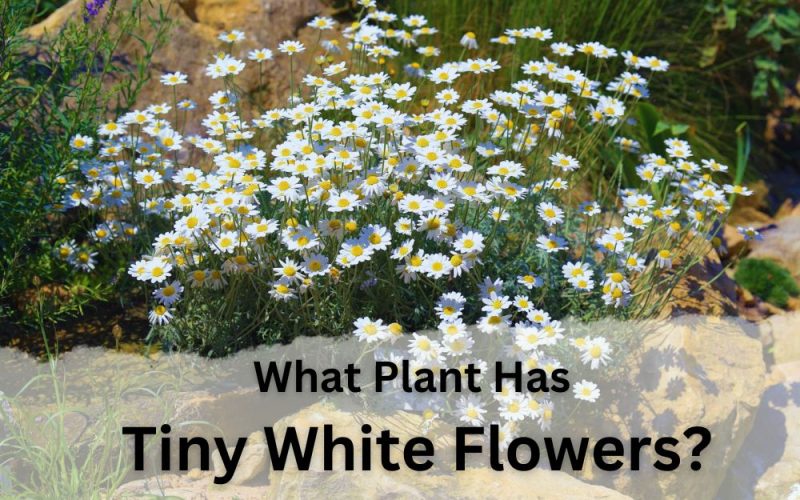I love to define different areas in my landscape by using tiny white flowers as border plants or for edging pathways and garden beds. Do you agree with me? They are also ideal for focal points in the garden and highlight specific areas.
But what plant has tiny white flowers? In my previous article, I discussed identifying the small white flowers. Additionally, I discussed the tall plants with small white blooms with you. In this article, I will provide you with a list of 15 plants that feature tiny white flowers, along with their names, images, and additional information. They are beautiful and versatile plants for adding to the landscape designs. Pair them with darker or more vibrant coloured flowers and create a striking contrast in your garden. Keep reading.
➡ You can hear the audio version of this article:
Best Plants with Tiny white Flowers
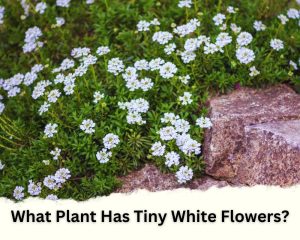
If you are searching for landscaping and gardening purposes, what plant has tiny white flowers? Here you will find the best ones with their images and names.
In addition, I will give you a brief overview of their appearance and habitat. It will help you where you can typically find them in the wild or where they are commonly cultivated in gardens and landscapes. Most of the plants on the list below are suitable for outdoors, except Woodruff (Galium odoratum), which can also be grown indoors as a potted plant or in containers. Please note that to grow it indoors, you must put it in a bright, indirect light location.
Also, you will find a general overview of when you can expect these plants to bloom. Please note that the flowering times can vary depending on factors such as:
- Geographic location
- Climate
- Specific varieties or cultivars.
Let’s find out what plant has tiny white flowers.
Baby’s Breath
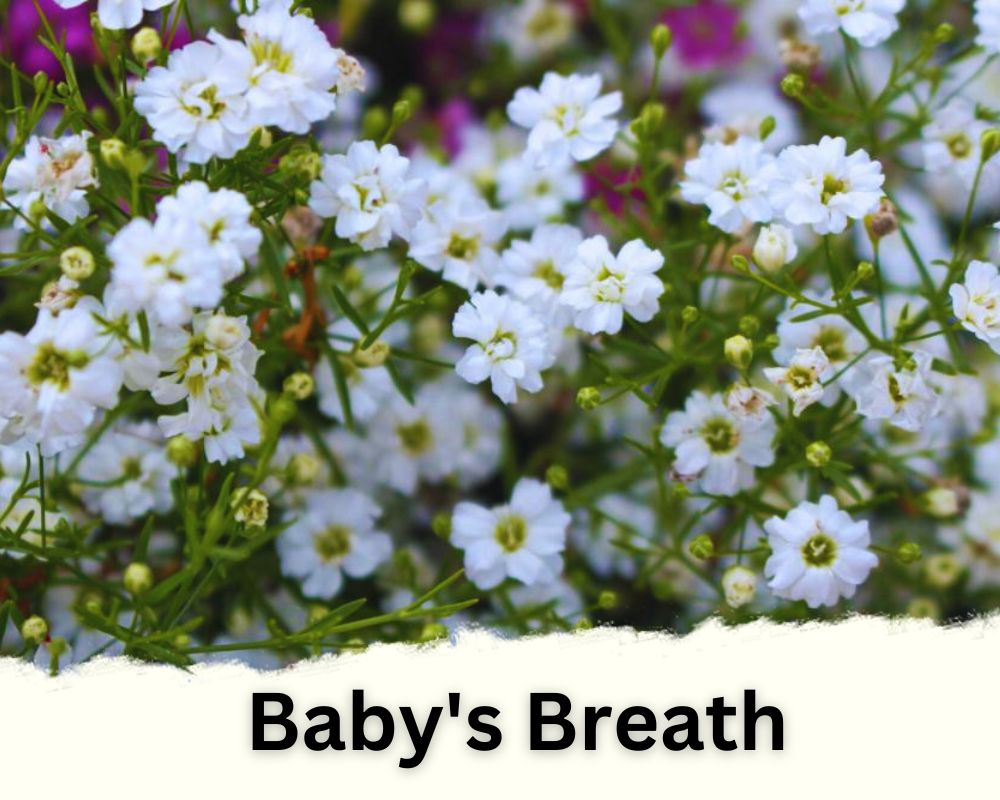
Scientific name: Gypsophila paniculate
Other Common Names: Gyp, Gypsophila, Baby’s Breath Gypsophila
Its appearance:
| Stems | The stems are wiry and can grow up to 3 feet in height |
| leaves | Slender, lance-shaped leaves that are typically bluish-green |
| Flowers | Small, delicate, and white, the flowers are composed of tiny, star-shaped petals that form clusters. |
Habitat:
Baby’s Breath, with its tiny white flowers, is native to Eastern Europe and Asia. It thrives in well-drained soils. You will find them in sunny meadows, open woodlands, and rocky slopes.
The flowering times:
Flowering Time: Baby’s Breath typically blooms in late spring to early summer, around May to June. However, the exact timing can vary based on the local climate.
Sweet Alyssum
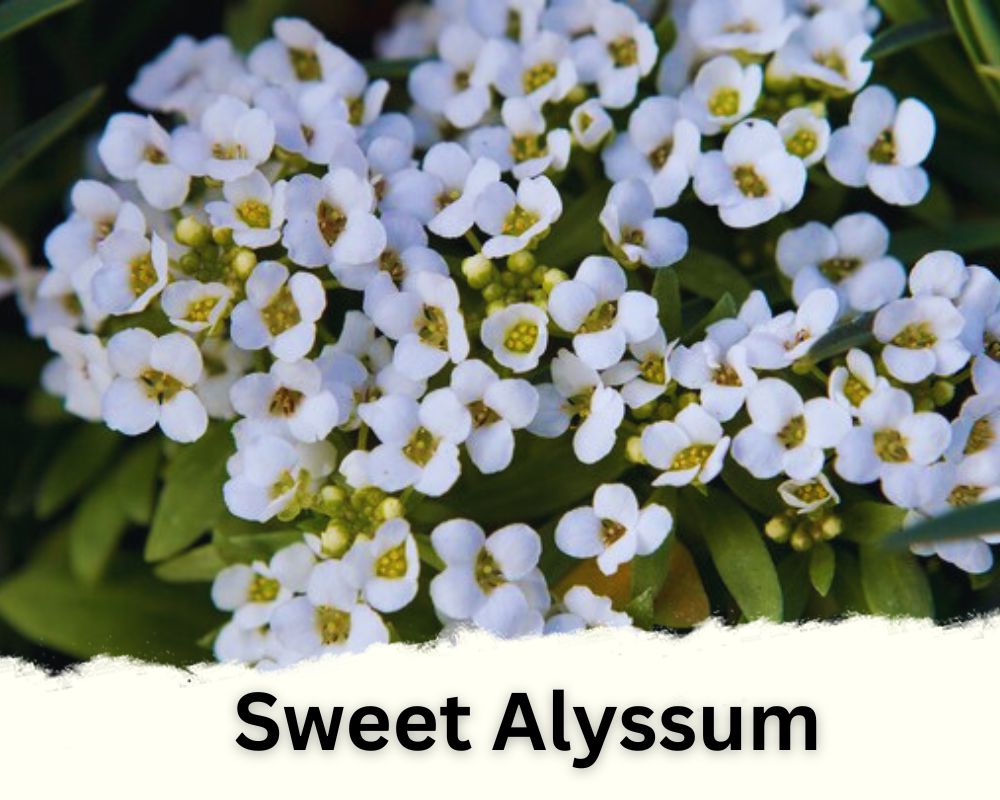
Scientific name: Lobularia maritima
Other Common Names: Sweet Alison, Lobularia, Alyssum
Its appearance:
| Stems | Alyssum has low, spreading stems that create a dense mat. |
| leaves | The leaves are small, oval-shaped, and grey-green. |
| Flowers | Its flowers are tiny and white, arranged in dense clusters, and they have a sweet fragrance. |
Habitat:
Sweet Alyssum is native to the Mediterranean countries. It loves places with full sun and well-drained soil to produce tiny white flowers. Hence, you will find it in coastal areas, along roadsides, and in gardens.
The flowering times:
Flowering Time: Sweet Alyssum is known for its continuous bloom throughout the growing season, from spring to fall. It starts flowering in late spring and can continue until the first frost.
Chickweed
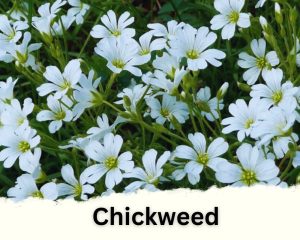
Scientific name: Stellaria media
Other Common Names: Starweed, Stitchwort, Winterweed
Its appearance:
| Stems | The stems are weak and sprawling. |
| leaves | Chickweed has small, oval-shaped leaves that are bright green. |
| Flowers | The small white flowers have five deeply divided petals, giving them a star-like appearance. |
Habitat:
Chickweed is one of the common weeds. It can thrive in a variety of habitats, including gardens, lawns, fields, and disturbed areas. You will find it in moist, fertile soils with partial shade.
The flowering times:
Chickweed usually starts flowering in early spring and can continue to produce tiny white flowers into early summer.
Star Jasmine
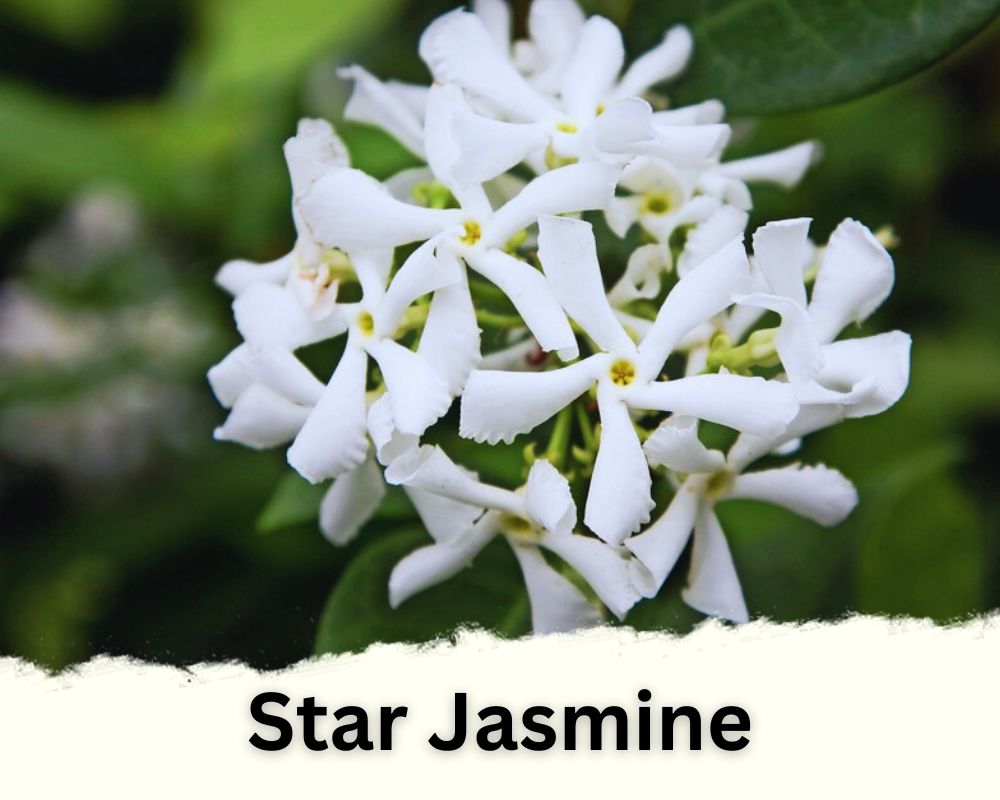
Scientific name: Trachelospermum jasminoides
Other Common Names: Confederate Jasmine, Chinese Star Jasmine
Its appearance:
| Stems | The vines can twine and climb, or be trained as a ground cover. |
| leaves | Star Jasmine has glossy, dark green leaves that are oval. |
| Flowers | The white, star-shaped flowers are highly fragrant and appear in clusters. |
Habitat:
Star Jasmine is native to East and Southeast Asia. It is a climbing vine, so you can find it in gardens while climbing over trellises, fences, and walls. This plant can thrive in both full sun to partial shade.
The flowering times:
Star Jasmine typically produces fragrant, tiny white flowers in late spring to early summer. It may have occasional blooms throughout the growing season.
Saxifrage
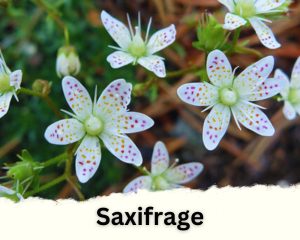
Scientific name: Saxifraga spp.
Other Common Names: Every species may have different common names.
Its appearance:
| Stems | The stems of Saxifrage can vary in height and thickness, depending on the specific variety. Some species have short, compact stems, while others have taller, more erect stems. The stems often hold clusters of tiny white flowers. |
| leaves | Saxifrage plants exhibit a variety of leaf shapes and sizes, depending on the species and variety. Generally, their leaves can be basal (growing from the base of the plant) or alternate along the stems. They are typically simple, serrated, or lobed, and can range in colour from bright green to grey-green, depending on the species. |
| Flowers | Saxifrage is known for its dainty and tiny white flowers. The individual flowers have five petals and are typically star-shaped or slightly rounded. The flowers are often held in loose, branched clusters or panicles, creating a delicate and airy appearance. The petals are usually pure white, but there can be variations in shade among different species. |
Habitat:
Depending on the specific species, it can be found in various habitats such as alpine regions, rocky outcrops, crevices, woodlands, and meadows.
The flowering times:
The flowering time of Saxifrage can vary depending on the species and variety. Many alpine species bloom in late spring to early summer, while others may flower later in the summer.
Snow-in-Summer

Scientific name: Cerastium tomentosum
Other Common Names: Snow-in-Spring, Mouse-ear Chickweed
Its appearance:
| Stems | The stems are trailing and covered with fine hairs. |
| leaves | Snow-in-Summer has silvery-grey, woolly leaves that are oblong or lance-shaped. |
| Flowers | The small white flowers have five petals and create a “snowy” effect when in full bloom. |
Habitat:
Snow-in-Summer is native to the Mediterranean region with dry, rocky, and sandy soils, such as coastal areas and rocky slopes.
The flowering times:
Snow-in-summer usually blooms in late spring to early summer, typically from May to June. The tiny white flowers create a “snowy” effect during this time.
Candytuft
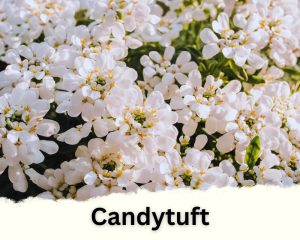
Scientific name: Iberis sempervirens
Other Common Names: Garden Candytuft, Perennial Candytuft
Its appearance:
| Stems | Candytuft forms low, mounding plants. |
| leaves | The leaves are evergreen and lance-shaped, with a dark green colour. |
| Flowers | The flowers are pure white and form dense, rounded clusters. |
Habitat:
Candytuft is native to southern Europe with well-drained soil and full sun. You usually find it in gardens and rock gardens.
The flowering times:
Candytuft is known for its spring bloom. It typically flowers in late spring to early summer, around April to May.
Woodruff
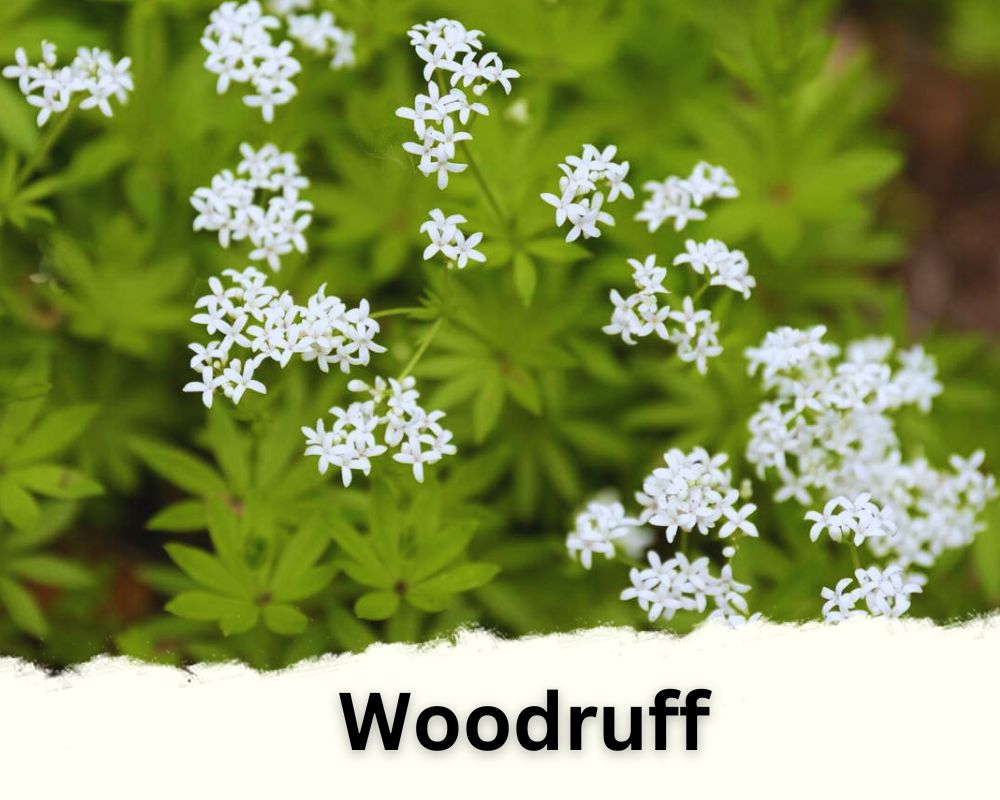
Scientific name: Galium odoratum
Other Common Names: Sweet Woodruff, Wild Baby’s Breath
Its appearance:
| Stems | The stems are delicate and often reddish. |
| leaves | Woodruff has whorls of narrow, lance-shaped leaves that are green and arranged in a circular pattern. |
| Flowers | The tiny white flowers are star-shaped and fragrant. |
Habitat:
Woodruff is native to woodlands in Europe and North America. It thrives in shaded areas with rich, moist soil and can often be found in deciduous forests. It is also a houseplant with white flowers.
The flowering times:
Woodruff typically blooms in late spring to early summer, around May to June. The tiny white flowers are often fragrant.
White Clover

Scientific name: Trifolium repens
Other Common Names: Dutch Clover, Ladino Clover
Its appearance:
| Stems | The stems are low-growing and can root at nodes. |
| leaves | White Clover has trifoliate leaves (three leaflets) that are green with a white V-shaped mark. |
| Flowers | The small white flowers are globe-shaped and often tinged with pink. |
Habitat:
White Clover is a common plant found in a wide range of habitats, including lawns, meadows, and pastures with moist, well-drained soil.
The flowering times:
White Clover commonly flowers from late spring through summer. The exact timing can vary based on the local climate and growing conditions.
Thyme

Scientific name: Thymus spp.
Other Common Names: Different specific species may have different common names.
Its appearance:
| Stems | The stems are woody and low-growing, often forming dense mats. |
| leaves | Thyme plants have small, narrow, and aromatic leaves that are typically green-grey to silver-green. |
| Flowers | The tiny white to pale lavender flowers are tubular and grow in clusters. |
Habitat:
Thyme, with its tiny white flowe,r is native to the Mediterranean regions with rocky, well-drained soils and sunny locations. This plant is commonly used as a culinary herb.
The flowering times:
Thyme species often produce their tiny flowers in late spring to early summer. The specific timing can depend on the variety.
Creeping Jenny
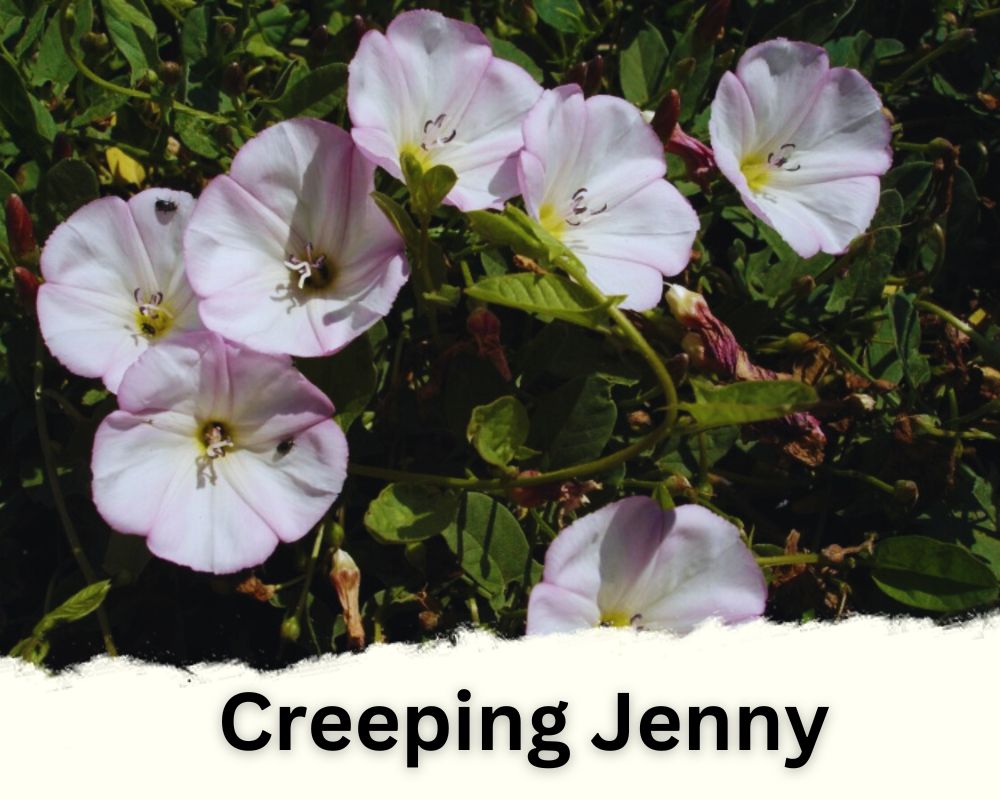
Scientific name: Lysimachia nummularia
Other Common Names: Moneywort, Herb Twopence, Twopenny Grass
Its appearance:
| Stems | This plant has long, trailing stems that root at nodes. |
| leaves | Creeping Jenny has rounded to kidney-shaped leaves that are bright green to yellow-green. |
| Flowers | The small, star-shaped white flowers appear in clusters at the ends of the stems. |
Habitat:
Creeping Jenny, with its tiny white flower,s is native to Europe, along streams, in damp woodlands, and gardens with moist soil.
The flowering times:
Creeping Jenny typically flowers in late spring to early summer, often in May to June. The bright yellow flowers contrast with its green foliage.
Yarrow
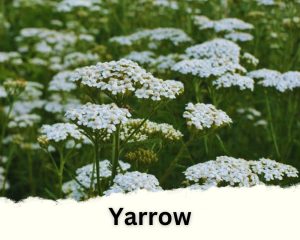
Scientific name: Achillea millefolium
Other Common Names: Common Yarrow, Milfoil, Thousand-Leaf
Its appearance:
| Stems | The erect stems can reach varying heights and are usually covered in fine hairs. |
| leaves | Yarrow leaves are finely divided into numerous narrow segments and are typically green. |
| Flowers | Yarrow’s tiny flowers are arranged in flat-topped clusters (umbels) and can be white or various shades of pink. |
Habitat:
Yarrow is a versatile plant found in a wide range of habitats, including meadows, pastures, roadsides, and open woodlands. It can tolerate different soil types and is often seen in sunny locations to produce tiny white flowers.
The flowering times:
Yarrow typically blooms from late spring through summer, with the peak of flowering occurring in early to mid-summer.
Bluets
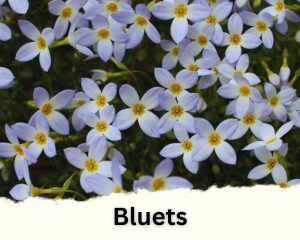
Scientific name: Houstonia spp.
Other Common Names: Quaker Ladies, Innocence
Its appearance:
| Stems | Bluets have delicate, slender stems that hold the tiny flowers. |
| leaves | Bluets have small, lance-shaped leaves that are typically green. |
| Flowers | The small white or pale blue flowers have four petals and a yellow centre. |
Habitat:
You often see it in open, grassy areas, including meadows, fields, and along woodland edges with well-drained soil and sunny or partially shaded locations.
The flowering times:
Bluets typically bloom in late spring to early summer, around May to June. They can continue flowering sporadically throughout the season.
Oxeye Daisy
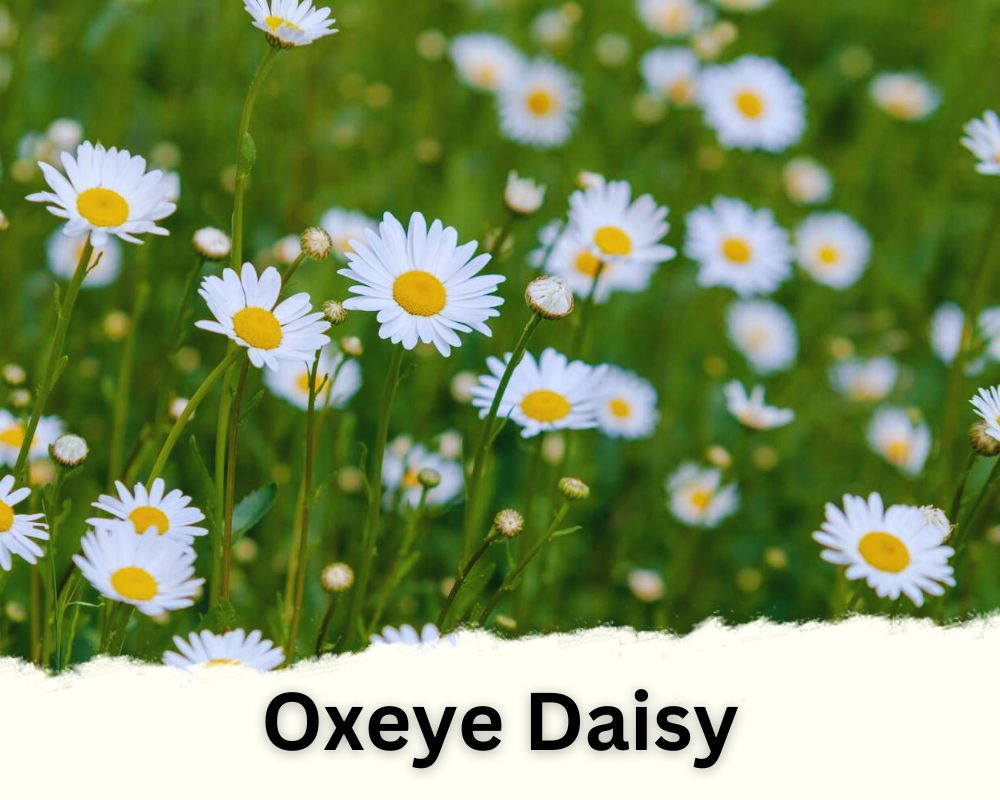
Scientific name: Leucanthemum vulgare
Other Common Names: Common Daisy, Moon Daisy
Its appearance:
| Stems | The stems are upright and can reach heights of 1 to 3 feet. |
| leaves | Oxeye Daisy has basal rosettes of lance-shaped leaves and alternate, smaller leaves on the stems. |
| Flowers | Its classic daisy-like flowers have white petals and a yellow centre disk. |
Habitat:
Oxeye Daisy is a common wildflower found in fields, meadows, roadsides, and disturbed areas. It thrives in a variety of soil types and can tolerate full sun.
The flowering times:
Oxeye Daisy commonly flowers in late spring and early summer and produces tiny white flowers, often from May to June. It can continue to produce blooms into the summer months.
Mugwort
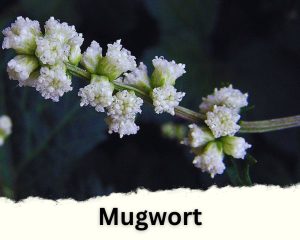
Scientific name: Artemisia vulgaris
Other Common Names: Common Wormwood, St. John’s Plan
Its appearance:
| Stems | The stems are typically tall and erect. |
| leaves | Mugwort leaves are deeply lobed and have a silvery-grey to green colour. |
| Flowers | The tiny, inconspicuous white flowers are borne in panicles. |
Habitat:
Mugwort is a hardy plant that can grow in a wide range of habitats, including roadsides, waste areas, and disturbed soils with sunny to partially shaded locations.
The flowering times:
Mugwort typically flowers in late summer to early fall, usually from July to September. The tiny white flowers are often inconspicuous.
Conclusion
Now you know what plant has tiny white flowers. I provided you with a list of the best ones, and you can easily choose them for your moonlight garden. I suggest you plant them near outdoor seating areas or along paths and enjoy them in the evening and at night. Small white flowers can stand out beautifully and create a magical atmosphere in your moonlit garden.
What do you think? What is your idea for using tiny white flowers in landscape design? Please let our readers know about your ideas and experiences below this page.

Elahe Rabiei
Hi, I’m Elaheh. My Academic major is plant protection, and houseplants are my expertise. As a houseplant lover, my house is full of indoor plants and it is my passion to take care of them. Hence, I’m here to share my knowledge and experience about growing healthy houseplants. I am also a plant protection advisor, so feel free to ask me any questions you may have.

